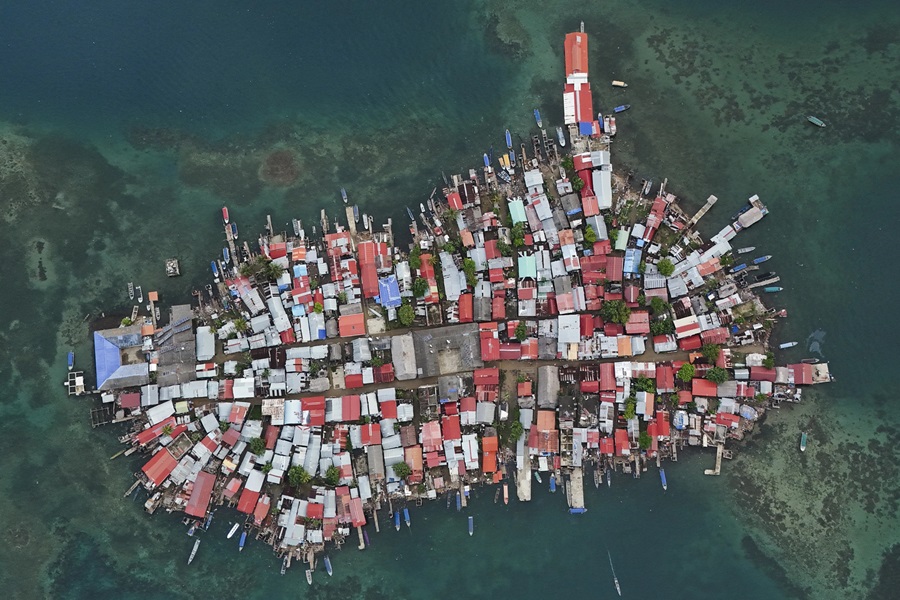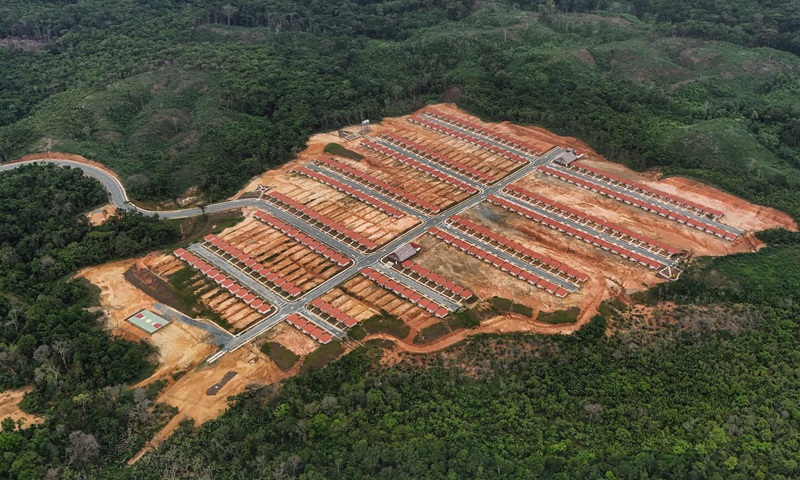A community of Guna indigenous people living on the tiny, overcrowded, and flood-prone island of Gardi Sugdub of Panama received the keys of their homes on the mainland from the government on May 29, 2024, marking a transition from their endangered island to the mainland.
The shift came as the Panamanian government completed the Nuevo Cartí development in the Guna Yala indigenous region, designed to accommodate approximately 1,200 inhabitants from Cartí Sugdupu, an island facing the imminent danger of being submerged due to rising sea levels.
The Gunas of Gardi Sugdub is an island with a 200-year-old history and home to about 300 families. The relocation to the mainland is part of a $12 million project to bring people to safer shores due to the threat of rising sea levels due to climate change.
The people of Gardi Sugdub are the first of 63 communities along Panama’s Caribbean and Pacific coasts being relocated due to the rising sea levels in the coming decades.
“The climate crisis that the world is experiencing has forced us here in Panama to relocate this island to this development of around 300 houses,” stated President Laurentino Cortizo, highlighting the urgency of the move.

“I’m excited. The houses are beautiful; they are small but very comfortable,” said Vidalma Yánez, 57, standing in front of her new home.
The move is scheduled from June 3 to June 6, marking these residents as Panama’s first climate change displaced people.
Panama is located in Central America, bordering both the Caribbean Sea and the Pacific Ocean, between Colombia and Costa Rica.
The endangered island
On a tiny island off Panama’s Caribbean coast, about 300 families are preparing for a dramatic change. Generations of Gunas who have lived on Gardi Sugdub, with a life deeply intertwined with the sea and tourism, are set to move to the mainland.
Life on Cartí Sugdupu has been marked by overcrowded conditions and a lack of basic services.
The island, roughly the size of five football fields, has homes with dirt floors, and walls and roofs made of cane, wood, and zinc sheets. It is one of the 365 islands in the Guna Yala archipelago, many of which are at risk of flooding.
The 49 inhabited islands are only between 50 cm and one meter above sea level, making them particularly vulnerable.
“There are other Panamanian islands that are also in a vulnerable situation,” Cortizo warned, attributing the issue to global warming caused by developed countries.
During the relocation event, Cortizo personally handed over a hundred keys to the new homes, ensuring that by the end of the event, all keys were distributed.
The Nuevo Cartí development, known as ‘Isber Yala’ (loquat tree in the indigenous language), was built with a state investment of 12.2 million dollars on 14 hectares of land owned by the community.
“The way of living is going to change a lot; people on the island are used to a different life,” said Yánez, adorned in the colorful attire of the Guna ethnic group.
The islanders’ livelihoods have traditionally been based on fishing, tourism, and the production of yucca and plantains.
For many, the move is motivated by the opportunity to leave the overcrowded island. Marialis López, 26, expressed her excitement about decorating her new home and planting “little flowers.” She will move to the mainland with her three young children and two brothers, looking forward to the improved living conditions.
Better housing at Nuevo Cartí
On Cartí Sugdupu, residents laced potable water and reliable electricity, with communal bathrooms located on the docks where wooden planks over the sea served as toilets.
In contrast, Nuevo Cartí offers houses of 40.96 m² with two bedrooms, a living room, dining room, kitchen, bathroom, and laundry, complete with water and electricity. Each house also includes a plot of 300 m², suitable for planting.

“It will be a bit hard because we no longer have the sea so close to fish, but different ‘businesses’ will come in,” Yánez remarked. Some houses are adapted for people with disabilities, and there are facilities to maintain Guna cultural practices.
Anel Franklyn, 33, shared his optimism about the move. “Here we would have electricity 24 hours a day, we have the bathroom inside, which is much better for us, and potable water,” he said.
Franklyn, who will live with his wife and five children, noted that he will no longer need to rely on a canoe to travel for work on plantain plantations. Reflecting on the change, Franklyn said, “Over there it’s all sea,” but added with hope, “Here it’s all forest where children can run and do more things.”

